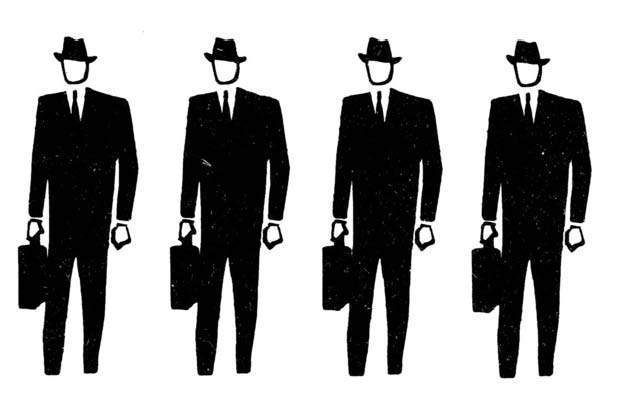The classic white dress shirt is familiar and omnipresent in men’s fashion. As a result, we tend to be unaware that for more than 200 years this singular item of apparel, which is essentially unadulterated in form from the late 19th century, has been able to define and represent status, wealth and fashion norms.
The history underlying this garment is rich and, in the main part, untold.
For men, the influence of the white dress shirt can be best traced back to the Victorian era where it was an important symbol of wealth and class distinction and a powerful emblem of sobriety and uniformity – despite it being for the most part hidden by outer garments.
The pure white colour of the cloth fulfilled masculine ideals of resolute austerity and only a person of substantial prosperity could afford to have their shirts washed frequently and to own enough of them to wear.

The link between social distinction and colour of the cloth was a marker for affluence, with the terms “white collar” and “blue collar” evolving from this delineation. Indeed, some working class men resented clerical workers for wearing white dress shirts, referring to them as “white collar stiffs” as they dressed above their social rank, as an employer not an employee.

Interestingly, the collar was also used as a symbol of status, with high-standing armour-like detachable collars preventing a downward gaze. Starched high rigid collars distinguished the elite from clerks, who necessitated low collars for ease of movement – the idiom “to look down one’s nose” was, in part, connected to this consequential upright facial stance.
Arguably, by the late 19th century, men who concerned themselves with decorative versus utilitarian dress were reviled for being “non-masculine”. Indeed, the unadorned white dress shirt was intrinsically correlated to appropriate moral masculine behaviour and this austerity of dress indicated that a man could be trusted and was soberly business-like.
By the close of the 19th century, the use of the white dress shirt as an insignia to define status had diminished. Increasing affordability and availability of the white dress shirt allowed a man to wear it for church, the “high street” and for employment within clerical roles – the defining factor for class separation was no longer the whiteness of colour, but the fit, quality of the cloth and discreet style variations.

After the end of the first world war, a societal shift was occurring and a new, softer and more fluid look was developing for less formal clothing.
One of the key influences was the Prince of Wales (Edward VIII), who was a popular leader of fashion at the time. His rejection of the white shirt, with its severe lines, in favour of soft, floppy, coloured shirts created a major shift in menswear. Nevertheless, in the early 1920s the white dress shirt was still associated with moral respectability.
In 1924 the founding father of IBM, Thomas J. Watson, was insistent on a dress code, demanding his office employees wear a classic white shirt as part of their mandatory attire. This association with ideals of steadfastness was also played out in the fictional American advertising creation of the Arrow Collar Man (1905-31), with his rigid white shirt, promoting American masculine ideals.
The next significant change for the white dress shirt was the introduction of synthetic fabrics, with questionable ability for comfort, in the late 1950s and early 1960s.
Then in the late 1960s and early 1970s an escalation of floridity occurred, in particular, frontal flounces and ruffles, as well as increased collar widths. But the white dress shirt was still seen as a very “proper” garment, as a vast array of highly coloured and printed casual shirts popularised the market place.

In the early 1980s, for a brief period, an innovative romantic style of dressing with loosely styled foppish and frilled white dress shirts was the height of fashion – influenced by popular new romantic bands, such as British band Spandau Ballet.
Then through the 1980s “power dressing”, with labels such as German fashion house Hugo Boss, was fashionable in urban business contexts and the white dress shirt regained its association with power and prestige – a legitimacy of place that it rightfully still holds, albeit an association aligned with designer names.
Next time you walk through a department store, and glance at the rows of intricately folded and exactingly boxed white dress shirts, you can pause to consider the important historical connections.
But this is only part of the story … the women’s white dress shirt has an equally significant but different story to tell, connected to labour reform and shifts in gender ideals. But that’s for another day …
Author
Senior Fashion Studio Lecturer, Queensland University of Technology



